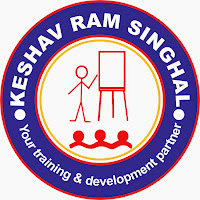Guidelines for conducting an opening meeting for an audit are mentioned in clause 6.4.3 of ISO 19011:2018 standard. An opening meeting is conducted at the start of an onsite audit with the following objectives:
- confirming that all participants (audit team and auditee) agree to the audit plan,
- introducing audit team members and their roles during the audit to the auditee, and
- ensuring that all planned activities of the audit can be performed during the audit.
Who should participate in the opening meeting?: The opening meeting should be chaired by the audit team leader. Audit team members, auditee's management and, where appropriate, personnel, responsible for the functions/processes to be audited, should participate in the opening meeting.
Introduction: There should be an introduction of the audit team members and auditee present at the meeting. The roles of each team members should be communicated, as necessary, during the meeting.
Recording attendance: An attendance sheet should be retained that mentions all members present in the opening meeting.
Confirmation of audit objectives, scope and criteria: The audit team leader should state and confirm audit objectives, scope (auditing against ISO 9001:2015 QMS standard) and criteria of the audit during the opening meeting.
Confirmation of audit plan: The audit team leader should state and confirm the audit plan and other relevant arrangements including (i) date/time/place for closing meeting, (Ii) any interim meetings needed, and (iii) any changes needed.
Familiarity with the audit process: The audit team leader should state the audit process so that the auditee familiarize with the audit procedures and methods. The audit team leader should also state that the audit will be a representative sampling of evidence, not a 100 percent inspection. This should be obvious to all participants, but it is important to declare this limitation before the audit begins.
Confirmation of formal communication channels and the language: The audit team leader should state and confirm (i) the formal communication channels between the audit team and the auditee, and (ii) the language to be used during the audit.
Progress reporting: The audit team leader should state and confirm progress reporting arrangements with the auditee's management.
Confirmation of audit resources and facilities: The audit team leader should mention and confirm the adequate resources and facilities available for the audit team.
Confirmation of confidentiality and information security: The audit team leader should mention and confirm matters relating to confidentiality and information security. The audit team leader should make a general commitment to maintain confidentiality related to the evidence gathered and conclusions generated during the audit.
Confirmation of access, health and safety, security, emergency and other arrangements for the auditors: The audit team leader should mention and confirm matters relating to access, health and safety, security, emergency and other arrangements, such as, security equipment, availability of other participants including observers, guides, interpreters etc and an outline of their roles.
Confirmation of activities on site: The audit team leader should mention and confirm, as appropriate, the activities on site, which can impact the auditing.
Presentation of information: The audit team leader should consider and mention, as appropriate, presentation of information relating to the audit findings reporting methods, including ant criteria for grading, for example - minor, major, observation etc.
Opportunity to ask questions: The audit team leader should provide an opportunity to ask questions with regard to the audit during the opening meeting to the participants and provide necessary clarification on the question asked during the opening meeting. The audit team leader should conclude the opening meeting with one more thanks to all participants present in the opening meeting. Thank them for coming to the opening meeting, and also for their cooperation and assistance related to the audit.
The opening meeting in an internal audit may be short and the audit team leader may (i) communicate conducting an internal audit, and (ii) explain the nature of the audit. The opening meeting for an internal audit can be accomplished in little more than five minutes. The opening meeting in an external audit should be formal as per the guidelines mentioned above, however it is suggested that such meeting should be completed within 20 - 30 minutes time. It is believed that a well-organized opening meeting leads to a successful audit.
Best wishes,
Keshav Ram Singhal

No comments:
Post a Comment